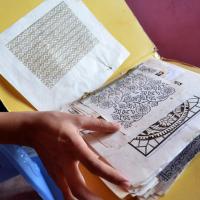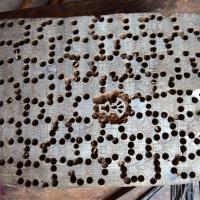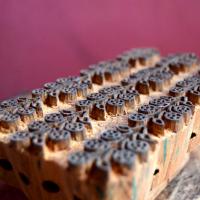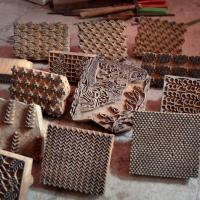Design Gallery
Block Prints of Bagh
The art of textile printing
by
The art of textile printing forms an inseparable component of India's most celebrated heritage. The wooden block printing in Madhya Pradesh has assumed the status of a craft with the passage of time. Although it has always flourished in the state, different styles and schools of textile printing from neighboring states have influenced it as well. The most significant aspect of this craft is the use of natural colors extracted from different flora and vegetables. These do not fade easily. Bagh prints, as they are beginning to be called now, are dramatic in the use of black and red alternately on a white background. Blocks are the main source of printing and have highly stylized motifs evolved over hundreds of years. These were earlier made of clay. Now these are being done in metal and wood ('sagavan' and 'shisham') that are sourced from Indore and other places nearby. Wood is first cut to make a block and one of its sides it smoothened. It is then painted white and the design is engraved and carved. Holes are drilled upto two centimeters on the sides of the block to avoid air bubbles. This also ensures that the block doesn't stick to the fabric because of vacuum during printing. Handles are made for easy grip. Blocks are of two types: Rek and Gad. Gad is a 'filled block' and is used for printing the base of the pattern. Rek is used for intricate prints that are done inside the spaces left blank by the Gad block.
For more details:
http://dsource.in/resource/block-prints-bagh























